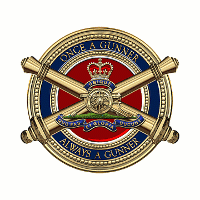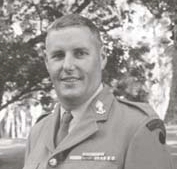He joined the New Zealand Army in 16 Field Regiment which was then being raised for active service in Korea. Bill deployed from Wellington by ship with the main body for Korea and was on active service from 10 December, 1950 until 21 February, 1952. He commenced as a gun number on number two gun in D Troop 162 Battery.
At the Battle of Kapyong in April 1950 he was the gun layer on his gun.
Bill subsequently became the number one on number four gun in his troop and was promoted to Bombardier. Bill served from Pusan in the South through to the battles of Imjin River and Kapyong, north of Seoul.
He spent two months in Japan with a couple of other regimental Bombardiers as instructors for the incoming 16 Field Regiment reinforcements.
On his return to New Zealand in early 1952 he was posted to Waiouru with four other Regimental NCOs to train reinforcements for the Regiment for the Korean War.
Bill took his first discharge from the Army in August 1952 and returned home to England for 12 months and worked as a London Bus Driver before returning to NZ and rejoining the Royal Regiment and served until May 1959 as a Bombardier. This included a year on active service in Malaya posted to 1 NZ Regiment and working in the mortar platoon. On his return to New Zealand Bill once again left the Army.
Bill must have got a seven-year itch inside two years, as he joined the Royal Regiment again in the Territorial Force in April 1961 and transferred to the Regular Force in November of that year in 2 Field Regiment in the rank of Sergeant.
This was to become Bill's longest period of service from late 1961 until the start of 1974, when he finally retires from the army in the rank of Warrant Officer Second Class.
Bill deployed to South Vietnam with the original 161 Battery in July 1965 and returned to New Zealand at the end of January 1967. This was the longest single period of service by any New Zealand soldier in the combat elements in Vietnam – 18 months. Bill served as the command post Survey Sergeant, and then as the Battery Commander's Survey Sergeant.
Bill was in this latter job, Harry Honnor's Survey Sergeant, at the Battle of Long Tan. This means that he was one of only three New Zealand gunners, and the last to go, of those that fought in the two major battles that his Regiment has been involved in, one in Korea and one in Vietnam. Bill's job at the Battle of Long Tan was to run his Battery Commander's tactical command post, organising the various batteries and combat aircraft that were involved in supporting the infantry during that desperate encounter battle.
Bill was with the Battery when it worked mostly in direct support of the 1st Battalion Royal Australian Regiment as part of the American 173rd Airborne Brigade, the main United States formation protecting the northern approaches to Saigon. Mostly out with the Battery Commander or the Battery, Bill operated in all of the main combat areas of the Brigade – War Zone C, War Zone D, Hobo Woods, Cu Chi, Ben Cat, the Michelin Rubber, and the Song Dong Nai River region.
It was the same when the Battery transferred to the Australian Task Force in mid-1966. Bill spent all of the rest of his time in Vietnam out with the Battery Commander, and was involved in all of the major operations during this period as well. He would of had a tough life.
In the Queen's Birthday honours in June 1966, while still serving in Vietnam he was awarded the British Empire Medal.
The citation reads:
"Sergeant Giles served in the Royal New Zealand Artillery Regular Force from 1953 to 1959 rising to the rank of Bombardier. He was released from the Regular Force in 1959 and re-enlisted in 1961. Since this date he served as an instructor at the School of Artillery. He is currently serving as Battery Survey Sergeant with 161 Battery in South Vietnam.
Since assuming this appointment Sergeant Giles has taken part in all combat operations to which 161 Field Battery has been committed. At all times his work has been characterised by outstanding steadiness and careful attention to detail. His skill and initiative had enabled him to deal with problems not previously encountered by the Battery. To cope with these problems he has devised innovations and procedures which have proved most successful and which have contributed in no small way to the high professional reputation established by the Battery.
At all times Sergeant Giles' devotion to duty, loyalty and outstanding leadership qualities have been an inspiration to the personnel who have worked with him. His sense of humour and cheerfulness in situations of danger and stress, have contributed greatly to the high morale of the battery."
On his return to New Zealand Bill worked for some time at the School of Artillery teaching technical subjects to those reinforcements that were heading to Vietnam. Bill finally retired from the Army in early January 1974 in Auckland where he was working as a Warrant Officer Second Class in Field Force Command on the Northshore.
Since retiring Bill has been an active and cheerful member and contributor to the Royal New Zealand Artillery Association. |







